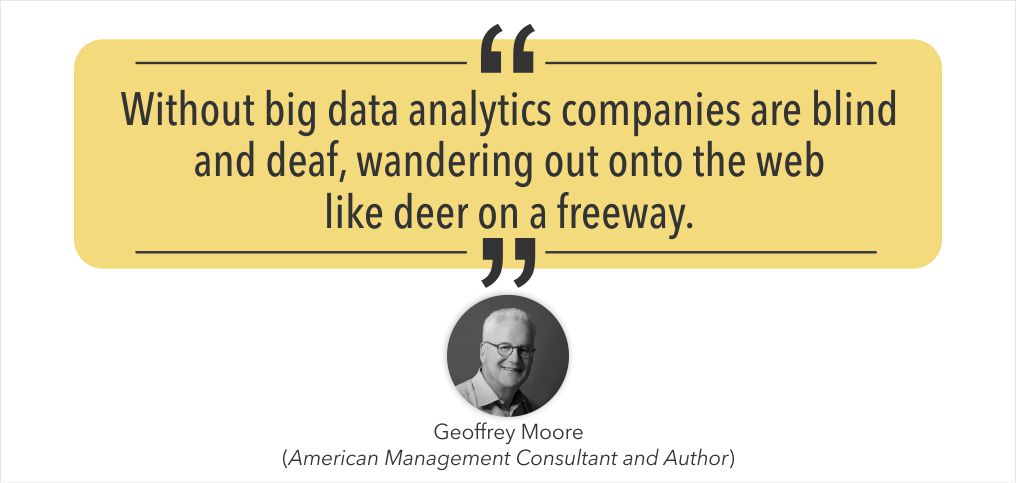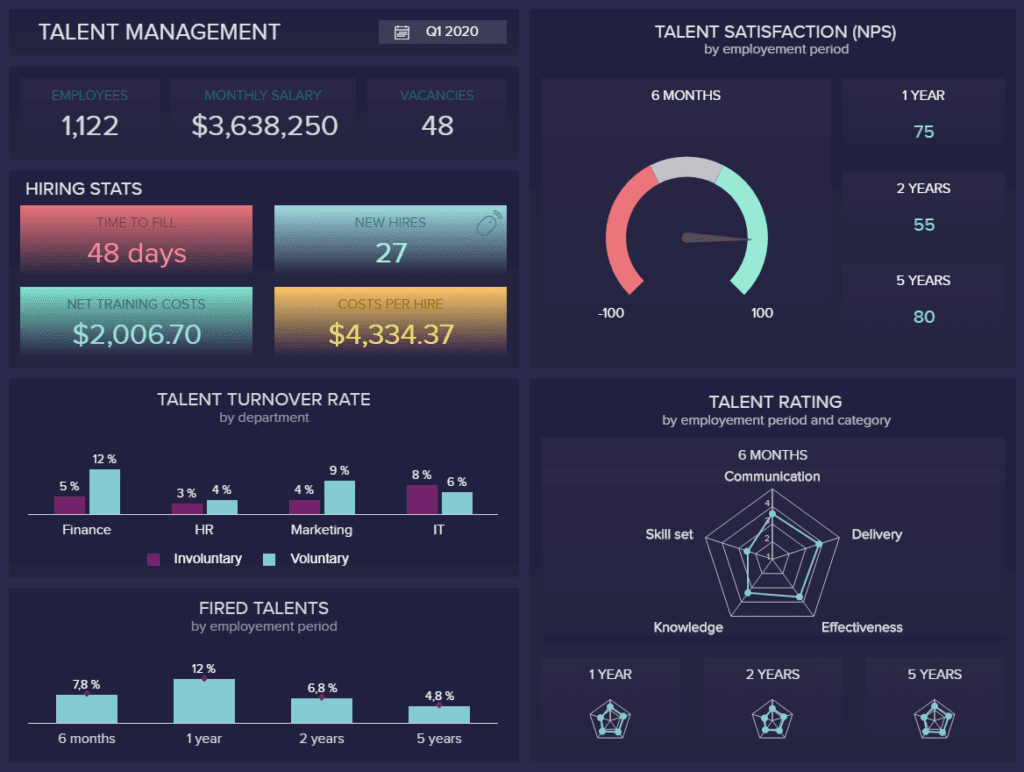MeasURE YOUR hiring success with the help of recruitment metrics and KPIs to Optimize your talent acquisition processes which can make or break your business.
Recruitment marketing is no longer just jargon, but an active approach talent acquisition teams are incorporating in their recruitment process to be the employer of choice for its prospective candidates in a hyper-competitive job market, where demand far exceeds supply. Building a recruitment marketing process is just the first step for setting up this new system. In addition, a critical requirement is to track its results, improvements, growth in talent database, increased awareness of the employer brand, identify gaps that need corrections to ensure success and clockwork progress of this process.
The Need to Measure your Recruitment Marketing Efforts

They say you can’t manage what you can’t measure. Tracking the results of your recruiting efforts gives HR teams and recruitment marketing agencies better insights into the source of hires – data which can be further used to attract inbound applicants to your organisation. It also helps:
a) To identify the sources of spending that are delivering the best results on your recruiting investment;
b) Best practices that should be continued, completely eliminated or realigned; and,
c) Tools to reconsider when allocating resources.
Remember that, recruitment marketing is a marathon, not a sprint. Keeping a track of real-time data – from cost per qualified applicant to top-performing traffic sources, from social media outreach to digital influence, allows your recruiting team to effectively change, experiment and enhance their ongoing efforts to reach your company’s hiring goals overtime.
For years, recruitment has largely relied on qualitative and observational outcomes, but the data used to analyse your recruitment marketing should provide the insight and impact that traditional talent metrics simply cannot. It’s important to have a centralised database that safeguards all verified candidate information and aligns your goals and metrics accurately to measure the success rate of your current recruiting approach.
For a function that has long struggled to provide quantifiable results, accurately evaluating the results of your marketing campaigns in recruitment isn’t just a best practice, it’s an indispensable component of every recruiting marketing strategy.

A Practical Approach to Measuring Recruitment Marketing Metrics
Now that you understand the importance of measuring your recruitment marketing, let’s find out whether your campaigns are paying off or not. You are probably aware of the various touchpoints in the candidate journey, from seeing one of your Facebook ads to becoming a happy new hire, every time a candidate interacts with your employer brand, it’s considered a touchpoint.
Recruiting metrics help in gauging the effectiveness of every touchpoint that led up to the candidate’s decision to apply, the resources invested in specific practices and the conversion rates at various stages in recruitment marketing. Including social media tracking, which is today an important part of recruitment marketing automation, also needs to be included in your measured metrics.
In an information-driven world, using recruitment analytics tools and recruiting KPIs available through data visualisation tools, make it possible for HR professionals to get a clearer picture of their recruitment marketing operations. Effective content for the first touchpoint, or employer brand content that drives conversions or a plethora of other talent acquisition factors that aid the hiring process can be identified.
Choose Recruiting KPIs and Metrics That Matter
HR KPIs are business performance indicators that help hiring managers to optimize the recruitment process with the help of metrics such as time to fill, cost per hire, recruiting conversion rate etc. These metrics are essential in establishing a healthy HR process by mapping the investments against returns on them and campaigns that are worth the spends.
Remember that hiring metrics and recruitment KPIs are only as useful as the questions they answer about your business. So, before getting into the numerous hiring metrics we can measure and plot in recruiting, know that every business is different and requires metrics that are unique to the business vertical. Consider the following principles for choosing good recruitment metrics that will positively impact your business:
Here’s a list of some critical KPI metrics that every recruitment marketing team should monitor to gauge how successful their efforts are. Some of them are concrete with easily quantifiable measurements, others are a bit more nebulous and subjective in nature.
1) Source of Hire
When it comes to judging the efficacy of a marketing channel, knowing the Source of Hire (SoH) will tell you which channels are returning results and which aren’t. It shows what percentage of your overall hires entered your pipeline from each recruiting channel or source (e.g. job boards, referrals, direct sourcing etc). Tracking this metric allows you to adjust or stop channels that don’t reap returns to shift your focus on those with better RoI.
For instance, if the majority of your hires started out as Twitter followers, you can easily justify scaling up your presence on that channel. On the other hand, if only 5% of your applicants are coming from Snapchat ads, it may be time to stop it in favour of something with a better conversion rate. This way you can direct more resources to the most valuable channels. Remember, you can always revisit each channel later or perform some A/B type testing on specific openings.
To measure your SoH, you can track individual sources i.e. job board 1, job board 2, job board 3 etc. and/or their overall categories like direct sources, social media ads, career sites, search firms, referrals etc. You can even use a broader taxonomy like inbound recruitment and outbound recruitment while also distinguishing between internal and external hires.
Gather data by conducting surveys, maximizing your ATS and examining web analytics through different recruitment marketing platforms that can help you track candidate engagement across various channels. Assigning UTM codes to job ads when you publish them on social media or job boards, can help you track down the amount of traffic each post brings when aligned with Google Analytics.
2) Social Media Engagement
Given the importance of social media in recruitment marketing, knowing how engaged your target audience actually is with your presence in each platform can shed some light on where to focus your hiring energy. If one platform turns out to be consistently lagging, as Snapchat was in the above case, you can use your recruitment metrics to back-up the decision to drop that channel for that campaign and refocus your resources elsewhere.
With that said, this KPI is one of those nebulous ones. From follower counts, click rates, share times and post engagement percentages, the world of social media metrics can be confusing to wade into. The question here is: what counts as engagement? What exactly should you be tracking? Is that even important to your business?
Sadly, the answers to each are subjective for every organisation.
But you can begin by identifying your social media goals which can help you determine its metrics. For every goal, you will require a related metric, to determine if your social media strategy is hitting or missing the mark.
A good starting point would be to dive into the native analytics of every social media platform. For Facebook, you can find them in the Insights tab, in Twitter you have to navigate to Twitter Analytics, for Instagram and Pinterest, you’ll require a business account before you’ll be able to see your data. But pulling out metrics and performance analytics from all these sources can be time-consuming. You can find a social media analytics tool instead or enlist the services of a recruitment marketing agency to accurately measure your social engagement online.
3) Time-to-Acceptance
Derived from Time-to-Fill, Time-to-Acceptance is a slightly more appropriate extension of the former, considering today’s candidate market. Instead of counting all the days from application to first day on the job, this metric measures only until an offer is accepted. The relevance of this difference is that a lot more can happen in the time span between application and offer acceptance than in the gap between acceptance and first day.

By simply looking at the time a candidate spends in the first three stages of the hiring funnel (i.e. Awareness, Interest and Consideration), the picture becomes much sharper. Given the fierce competition for top-quality candidates, the risk of losing a potential hire in the time-to-acceptance stage is much higher. The reason is simple- candidates are often entertaining multiple offers at once and competing offers can come in at any point. As a result, you can easily lose out on candidates, if you take too long to make an offer. Frankly, the relevance of what happens between offer acceptance and start day, pales in comparison.
4) Offer Acceptance Rate (OAR)
In simple words, it’s the percentage of candidates who accepted your formal job offer. Here’s the formula to calculate OAR:
Offer Acceptance Rate = No. of Offers Accepted/ No. of Offers
This formula should only include the official and final offers made to external candidates. Informal offers or those made during different stages of the recruitment process don’t count towards this metric. It’s a flexible metric, usually calculated annually. But if you have had a busy recruiting month, you are free to calculate it more frequently. Similarly, you can also mould the formula to calculate the job acceptance rate per recruiter, hiring manager or department in your organisation.
Sometimes, this key HR metric is expressed as a ratio as well. For example- if your organisation extended 10 job offers in a month, and six candidates accepted, your offer acceptance ratio for that month is 10:6. Your offer acceptance rate will be at 60%. Measuring OAR helps you to determine the overall success of your hiring process. If it’s at 90%, there’s good reason to believe your process works well, if your OAR drops to 30%, it’s an indicator of a problematic recruitment process.
5) Employee Referrals
A well-rounded recruitment marketing strategy will always take into account the impact of an organisation’s number #1 asset- its existing employees. This metric can be extremely useful to see the specific impact on your incoming applicants. According to a 2021 report by Jobvite, 40% of hires are referred by employees which can help organisations to minimize their cost per hire.
These high-value referrals have the potential of getting lost in the daily shuffle of candidates or the proverbial “ATS blackhole”. Therefore, moving these applications along their own process will help you keep a track of them. Measuring this metric can be made easier by putting a side-track application process for these referrals. But even if there is no separate process in place to track your referral applications, a simple questionnaire for new hires that asks them straight up if they were “referred by an existing employee, and if so, by who”, can work as well.
6) Cost-per-Hire
This is one of the oldest but most important recruitment metrics. It’s widely accepted in the HR world even though it’s very time-consuming to calculate. When it comes to evaluating the success rate of any type of recruitment effort, the very first thing in question is its cost-effectiveness. The more bang for your buck, the better it is. For instance, it’s much cheaper to fund an employee referral program than it is to launch an entirely new campaign from scratch.
Along with other recruitment marketing fundamentals like nurturing your social media audience so those passive job seekers remember to come calling for you when the time is right and using content marketing tactics as part of your campaigns, implementing fiscally smart recruitment strategies can help you keep the funnel full without spending obscene amounts of money.
In 2012, HR leaders from around the world created a standardised formula to calculate cost-per-hire which is widely followed to this date:
Cost Per Hire = (Internal Recruiting Costs + External Recruiting Costs)
Total no. of hires
Note that, costs and number of hires refer to a certain measurement period i.e. monthly or annually.
The recruiting world is chock-full of data analytics and ways to measure it. By focussing on some basic metrics like the ones discussed above, you can keep your budget on track and your talent pool teeming long into the future that will propel your business to new heights.

Using HR Dashboards For Tracking Data
Making sense of all the recruitment data your organisation collects can be the stuff of nightmares for even the most tech-savvy recruiters. The sheer amount of tools a data-driven recruitment function uses and the different data silos they create can be overwhelming, to say the least. Not to mention, it often leaves the most critical recruitment KPIs out of the mix. At the end of the day, a recruiter is just left with metrics instead of actionable intelligence. Thus, knowing how to measure your HR metrics is incomplete without knowing the best way to track all the data from it.
The recruiting world has advanced from spreadsheets, presentations and basic database reports to interactive HR dashboards that connect the dots of your data to provide an in-depth analysis of your recruitment efforts. It measures data on a granular level, otherwise ignored in traditional talent tracking tools. Simply put, an HR dashboard is a dynamic overview of the most important recruiting metrics in one place.

Luckily, most HR software systems come with dashboards these days that don’t require a business intelligence pedigree to use. They give you all the recruiting intel you need and don’t distract you with ten thousand other surrounding data points. Moreover, it’s budget-friendly unlike third-party data integration solutions like Zapier or Jitterboom.
But remember, that there’s no standard dashboard that can work for all businesses since the recruiting needs of a high-growth company is far from those of an enterprise or a retail business. That’s why hiring professionals highly recommend creating your own dashboard from the scratch.
To create a winning HR dashboard for your company:
a) Choose the recruiting KPIs you want to track and prepare the data for processing it in your dashboard.
b) Create the right charts to represent those data points and add it into your recruiting dashboard.
c) Plan out the data hierarchy of your dashboard and arrange your widgets meaningfully to prioritize the display of critical information.
d) Bring your dashboard to life with colours and formatting to amp up it’s aesthetics for a more convenient and distinguishable presentation of recruiting data.
By leveraging the power of HR metrics to your advantage and working with an intelligent dashboard software, you’ll be able to streamline your talent acquisition efforts and enhance your recruitment-based business solutions that will ultimately push you ahead of the pack.
Remember that, transformation and agility are the key success drivers for any business, especially now, when the world has shut down and the chasm between certainty and uncertainty is becoming wider and deeper. Organisations that are not prepared to rise up to the challenges of a post-pandemic world will not get ahead of the hiring curve that is to come.
If your internal team needs help with their HR practices, consider availing our recruitment marketing services that can just as efficiently and accurately help you track down and make the most of your hiring efforts.






